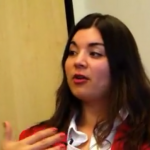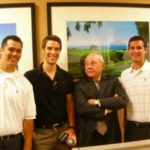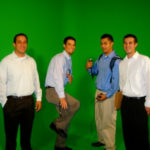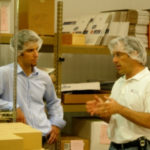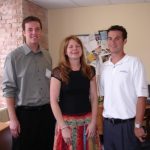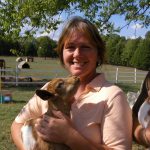One might expect the head killer whale trainer at Sea World SeaWorld San Diego to have, well, a killer whale size ego; that could not be further away from the truth. Although Robin held an almost prenatal love for the ocean and its inhabitants, having been raised around a SCUBA air station owned by his father, Robin found himself at 27 working in sales. An ad in the paper for SeaWorld caught his eye one day, and his inner child took control.
 Yet through all of his successes, he remains humble, approachable, and as inspired as ever. These are the footprints of passion. Robin, who has led countless Shamu performances during his tenure at SeaWorld, still speaks with a charming reverence for his craft, and for the animals he so dearly respects and admires. Robin calls himself a behaviorist, but any similarities with Pavlov’s bell end there. To see Robin and the other trainers interact with the whales is to see a microcosm of a better world, where diverse inhabitants embrace their differences on the way to understanding their similarities.
Yet through all of his successes, he remains humble, approachable, and as inspired as ever. These are the footprints of passion. Robin, who has led countless Shamu performances during his tenure at SeaWorld, still speaks with a charming reverence for his craft, and for the animals he so dearly respects and admires. Robin calls himself a behaviorist, but any similarities with Pavlov’s bell end there. To see Robin and the other trainers interact with the whales is to see a microcosm of a better world, where diverse inhabitants embrace their differences on the way to understanding their similarities.
Interview: How To Become a Killer Whale Trainer
I’ve had a little bit of dolphin experience, sea lion, and otter. That place is really fun. Didn’t get to spend enough time there. It’s the same training concepts, but it’s different. I mean, animals on land? You’ve got otters with attention spans of like, a minute. Walruses are fantastic to work with.
What’s the most dangerous to work with?
The most dangerous animal to work with? The king of the sea. Killer whales. That’s a good name for them. They make me more nervous. They’re very dangerous, aggressive animals. But if you build a good relationship with them, you don’t have to worry about that. Good trainers are going to spend most of their time building a relationship with the animal. Then you feel more comfortable and at ease. You know where your limits are and what parameters you’re working with. It’s just like people. If you only work together, you’re not going to be real comfortable around each other. But if you hang out and talk about other things, you’ll feel more at ease.
Killer whales are trainable. They’re relationship based, so they swim in pods.
It took me until I was 26 until I really decided that I needed to go after some kind of career. I always loved and wanted to work with animals since I was about 8 years old. I went to one of the zoos in Northern California and watched this little animal show and said, ‘That’s it.’ What happens so often is that people forget what they want to do. What your passion and dream is when you’re younger, when it became important to you, that’s something that’s valuable and shouldn’t be forgotten.
Especially a job like I have. There’s not a whole lot of opportunity for a job like this. There’s not a whole lot of people with my job. You have to remember what you want to do.
I started remembering when I saw a little ad in the paper and it reminded me of what I wanted as a kid. For me, this is the kind of job I need because it is my passion. I want to stay here until I’m 85 and they have to kick me out of here. Until I physically can’t get a wet suit on anymore.
I did not think I would end up here running Shamu stadium at Sea World. I just wanted to work with animals. It just branched on out.
About 26 was when I finally decided to do something. I think it takes a few years for people to get out there and experience a few things. So 26 isn’t too late to start a career by any means.
We used to have our scuba air station with about 27 tanks. I had two other brothers that are older. Our weekend trip was scuba diving. We’d go out and scuba dive, spear fish, and spend time in the water. We were always in the water. Also, I’ve lived on a couple farms around the country. So my life has been geared towards caring for animals. Taking care of them and being really comfortable around them. As a young kid, I had 5 dogs and 20 cats with cows and pigs. Plus the water thing. All my family were swimmers. I played water polo. I could dive 36 feet and it wasn’t a problem.
I was with my mom at a little show at Marine World Africa in Vallejo. They were just doing a backwoods animal show. They had a possum and a skunk and I go, ‘That’s what I want to do.’ I was 8 years old.
It was cool. Our killer whale show was recognized as the best in the world last year by an outside organization. That makes you feel good about what you do.
It is my story. But it’s all our stories.
If you want to know what I do, I’m a behaviorist. I motivate killer whales to do certain things by modifying their behavior through relationships I build.
We have hubs research institute. We are the people who retrieve research samples. The samples allow for all types of research to be done. We chart their growth rates and measure them. Every whale here we’ve charted their growth rates over the years and we know how much food they consume. We can tell the scientists now that it takes this much to grow a killer whale. Then you go out into the ocean and you can relay that to the fisheries and assess the fish population. That information is very important because it lets them know to back off 10%, or that they’re doing a great job. Very important.
I get to learn a lot about being a marine biologist. Or being a veterinarian, or an oceanographer. But really, I’m a behaviorist.
What’s neat is the relationship between the whale and I. She helps me surf on top of her when she’s going 20 mph in front of 1,000 people. She helps me succeed, and I help her succeed. That’s a good testimony for relationships. We help each other succeed. And it’s all positive. So we have a great time.
Practice and practice and practice. People have come here and done it with smaller animals, so it’s an approximation. The whales know how to do it, it’s just us learning it. Balancing and stuff like that. Is it difficult to learn? Different people are going to have different strengths and weaknesses. Riding a killer whale might be really easy for a lot of people, and might be really difficult for others. You definitely have to get out and practice. You have to have a thick skin because everyone is going to critique you. You’ll be practicing and people are saying, ‘Well, you should have done this. You weren’t smiling. Your toes weren’t pointed in the right direction. Your hands weren’t out.’ You learn how to get a thick skin through critiques and you can apply it. Take advice and do it and try it out. But, it does take awhile before you’re doing the big behaviors.
The simple little things, like getting on a killer whale and riding it, everyone first time, they fall off during pick up every time. You just have to pick yourself up and try again. Those killer whales are slippery.

